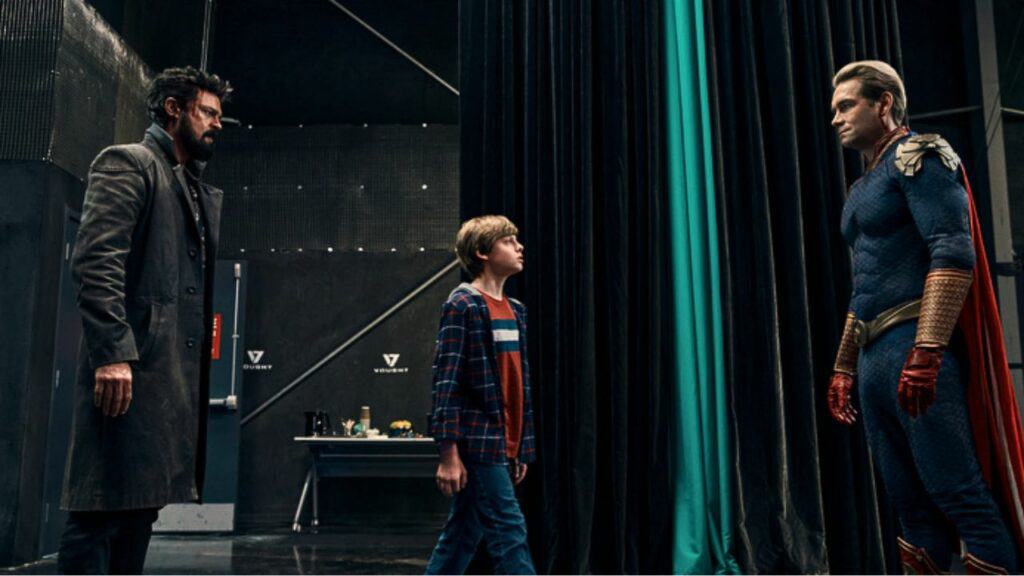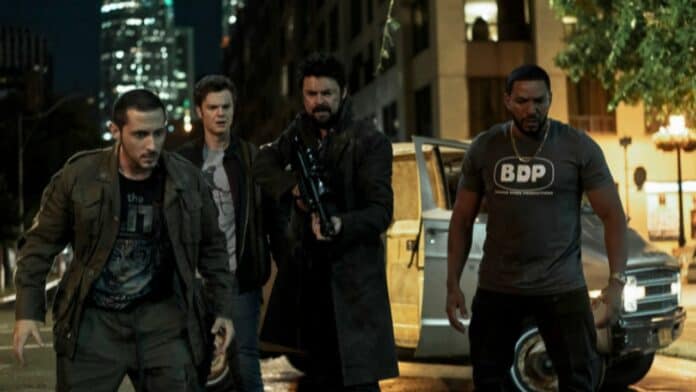The Boys is a satirical superhero series developed by Eric Kripke for Prime Video. The series is based on the comic book of the same name by Garth Ennis and Darick Robertson.
The Boys, a trailblazing series known for its unorthodox take on the superhero genre, is not just a product of creative storytelling but also a mosaic of various cinematic influences.
This article explores the diverse film inspirations and influences that shape the unique narrative and visual style of The Boys, contributing to its distinct place in modern television.
Deconstructing Superhero Myths: The Influence of Classic Superhero Cinema
Reinterpreting Icons
The Boys takes significant inspiration from classic superhero films, albeit with a twist.
While movies like the Superman and Batman franchises have traditionally presented superheroes as paragons of virtue, The Boys flips this narrative.
It draws on these familiar tropes only to subvert them, presenting its ‘heroes’ as deeply flawed, even corrupt, figures.
A Darker Tone
The dark and gritty tone of The Boys can be traced back to the more somber superhero films of the 2000s, like Christopher Nolan’s The Dark Knight.
These films started to explore more complex and morally ambiguous superheroes, a theme that The Boys takes to an extreme.
Satirical Edge: The Influence of Political and Social Satire Cinema
Reflecting Society
The Boys heavily borrows from the genre of political and social satire.
Films like Dr. Strangelove and Network, known for their biting commentary on politics and media, can be seen as precursors to the show’s satirical treatment of contemporary issues, such as corporate greed and the corrupting influence of power.
Modern Parallels
This aspect of The Boys aligns with modern satirical films that tackle the absurdities of current social and political landscapes.
The series uses the veneer of superheroism to comment on real-world issues, much like how these films use humor and irony to critique society.
Visual Style: The Influence of Action and Thriller Cinema
High-Octane Action
The series’ action sequences and visual effects have a cinematic quality reminiscent of high-budget action films.
The influence of movies like Die Hard and The Bourne Identity is evident in the show’s well-choreographed fight scenes and suspenseful plot developments.
Thrilling Aesthetics
Moreover, the cinematography and aesthetic choices in The Boys often mirror the stylized visuals common in modern thrillers and action movies.
The use of dramatic lighting, dynamic camera angles, and special effects contributes to the show’s intense and engaging visual experience.

The Legacy of Anti-Hero Films
Flawed Protagonists
The Boys owes a debt to the genre of anti-hero films, where the lines between heroes and villains are blurred.
Movies like Taxi Driver and Fight Club feature protagonists with questionable morals, similar to the characters in The Boys, who are complex and often morally ambiguous.
Challenging Conventions
By drawing on these anti-hero narratives, The Boys challenges conventional notions of heroism and villainy, presenting a more nuanced exploration of character and motivation.
Conclusion
The Boys stands as a unique entity in the landscape of superhero-themed entertainment, largely due to its diverse cinematic influences.
From classic superhero films to political satires, and from action thrillers to anti-hero narratives, the series skillfully amalgamates various film genres.
This rich tapestry of influences not only shapes the series’ narrative and aesthetic but also reinforces its status as a groundbreaking and thought-provoking addition to the superhero genre.

